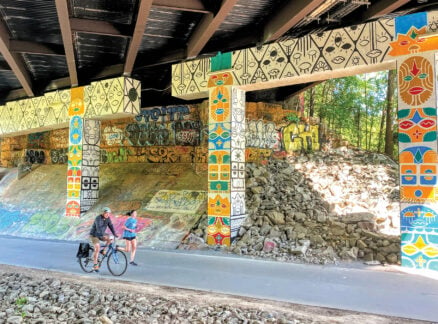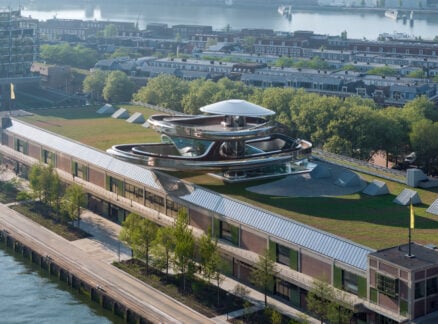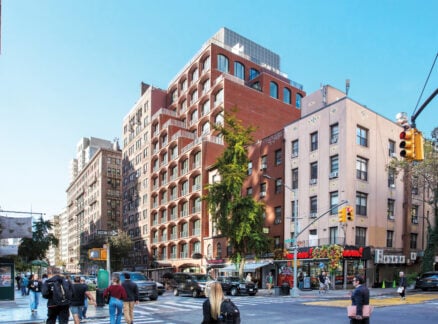January 19, 2010
Book Review: The SANAA Studios
Architecture-school crits are a famously bruising rite of passage for aspiring design professionals—unless, apparently, your professor is from the renowned Japanese firm SANAA. In the introduction to The SANAA Studios 2006–2008 (Lars Müller Publishers), the Dutch architect Florian Idenburg recalls a crit from his student days in Rotterdam, conducted by SANAA’s Kazuyo Sejima:I remember Sejima […]
Architecture-school crits are a famously bruising rite of passage for aspiring design professionals—unless, apparently, your professor is from the renowned Japanese firm SANAA. In the introduction to The SANAA Studios 2006–2008 (Lars Müller Publishers), the Dutch architect Florian Idenburg recalls a crit from his student days in Rotterdam, conducted by SANAA’s Kazuyo Sejima:
I remember Sejima sitting, quietly smoking, listening to an exhaustive argumentation to justify one of the less elegant proposals. After a long silence her response was liberating. Pointing first to a sketch and subsequently to a plan she spoke softly: “This … I like … this … I do not like.”
For Idenburg, steeped in the “paranoiac-critical method” of Rem Koolhaas, the directness, simplicity, and seeming intuitiveness of Sejima’s judgment came as a breath of fresh air. He ended up interning at SANAA’s Tokyo office and eventually became an associate at the firm. (He’s now a partner at SO-IL, in Brooklyn.) And, in 2006 and 2007, he helped bring the firm’s understated method to the United States, co-teaching the first two of its three spring studios at the School of Architecture at Princeton University.
But this slim volume—which Idenburg edited, and whose full title is The SANAA Studios 2006–2008: Learning from Japan: Single Story Urbanism—actually provides relatively few glimpses of Sejima and her partner, Ryue Nishizawa, in the classroom. Its focus is not so much what the Princeton students learned from SANAA, or how they learned it, as what the rest of us can learn from the firm’s work and Japanese architecture in general.
One thing I learned: that to label SANAA’s work “minimalism” is to misapprehend it. According to an essay by the architect Stan Allen—who invited SANAA to Princeton—Sejima and Nishizawa themselves resist the minimalist label; he writes, “They are not satisfied to produce an architecture that begins and ends in refined details and sophisticated material choices.” Allen aligns SANAA’s work, instead, with “dirty realism” and argues that the toughness that many critics noticed in the firm’s 2007 design for the New Museum, on New York’s still-somewhat-gritty Bowery, “is the rule rather than the exception.”
His point is bolstered by the photos in the book, taken by the Dutch architectural photographer Iwan Baan. Baan revisited the sites of the three Princeton studios—which are also the sites of three earlier projects by the SANAA principals (the Moriyama House, Onishi Hall, and the 21st Century Museum of Contemporary Art). Years after their completion, these buildings do indeed look less pristine and delicate than the firm’s minimalist reputation might suggest. If they are not exactly models of architectural toughness, they are certainly buildings at home in the real world.
So The SANAA Studios may make readers look at the firm’s designs a little differently. As for how the architects arrive at those designs, there are only hints of their working methods here. But one thing is clear: Although SANAA may eschew the ritual abuse of the architecture-school crit, it does embrace another time-honored tradition in the profession—the brutally long workday. Idenburg discovered as much when he reported for his internship:
Upon arrival in Japan, I submerged myself into a monastic culture that shunned daylight. Hidden in an old warehouse in Higashi-Shinagawa, a bleak neighborhood near Tokyo Bay, we diligently worked away. Sixteen-hour workdays were not uncommon. Questions multiplied and reasoning evaporated. High on sleep deprivation, the desire to understand became trivial. Architecture became religion.
Now that’s dirty realism! The SANAA Studios 2006–2008: Learning from Japan: Single Story Urbanism can be purchased online from Amazon for about $32; read more about the book at Lars Müller Publishers.





